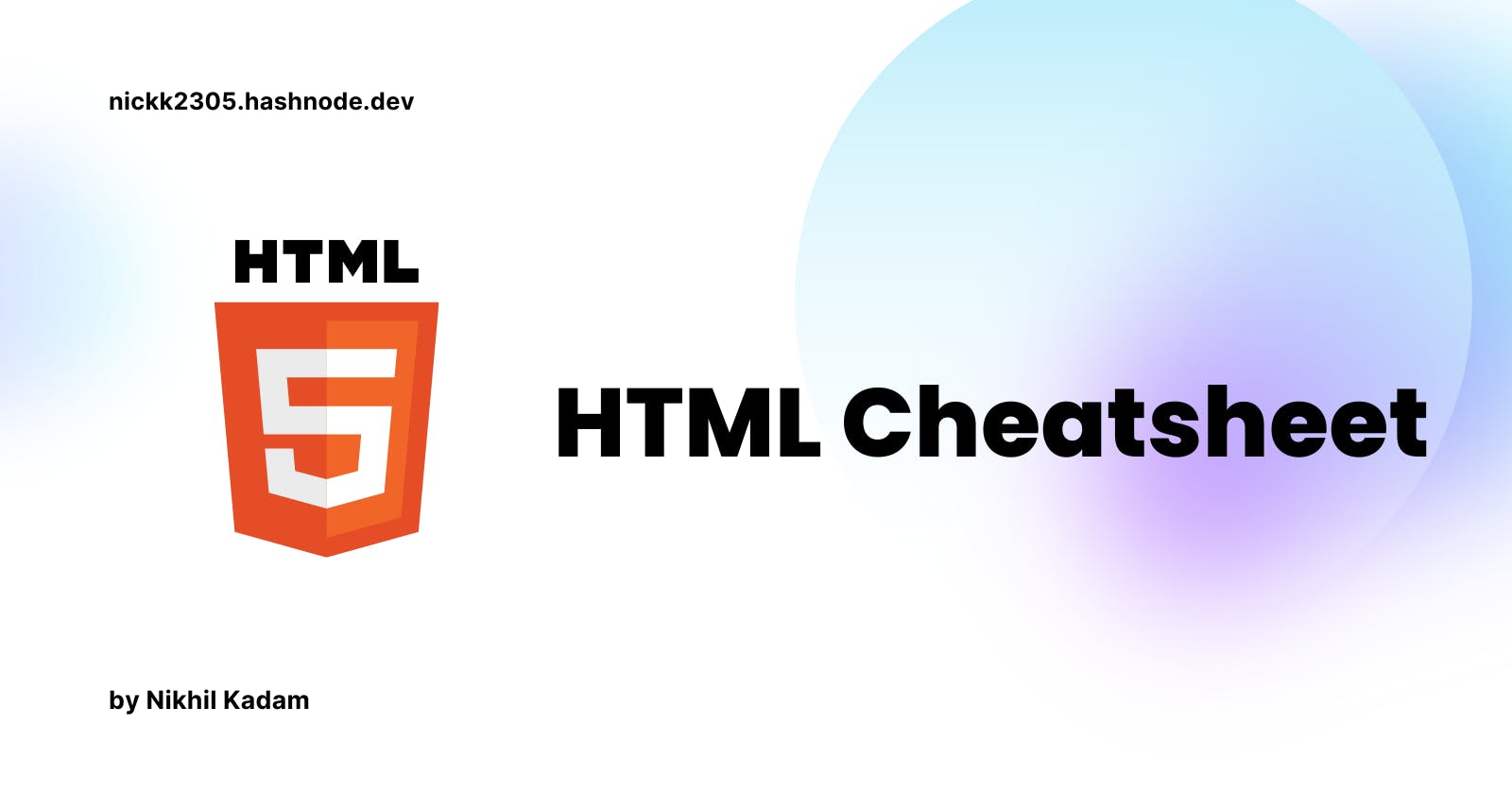HTML Cheat Sheet: A Comprehensive Guide for Beginners and Professionals
A cheat sheet to save beginners a lot of time by providing you with a quick reference guide for common HTML tags and attributes
What is HTML?
HTML (Hypertext Markup Language) is the standard language used to create web pages. It's a markup language, which means it's used to "mark up" text to make it appear a certain way on a web page.
Basic Syntax and Structure
HTML documents are made up of elements, which are represented by tags.
An element begins with an opening tag and ends with a closing tag, which is the same as the opening tag but with a forward slash (/) before the tag name
Elements can have attributes, which are specified in the opening tag and provide additional information about the element
Common Tags
<p>: Defines a paragraph<div>: Defines a division or section of the document<span>: Defines an inline section of the document<a>: Defines a hyperlink<img>: Defines an image<form>: Defines a form for user input<input>: Defines an input field<select>: Defines a dropdown list<textarea>: Defines a text area<table>: Defines a table<tr>: Defines a row in a table<td>: Defines a cell in a table<th>: Defines a header cell in a table<ul>: Defines an unordered list<ol>: Defines an ordered list
HTML5 Semantic Elements
<header>: Defines the header of a document or section<footer>: Defines the footer of a document or section<article>: Defines an independent piece of content<section>: Defines a section of a document
HTML5 Forms and Input Types
<form>: Defines a form for user input<input>: Defines an input field<select>: Defines a dropdown list<textarea>: Defines a text areaInput types:
text,password,radio,checkbox,submit,reset,button, etc.
HTML5 Tables and Lists
<table>: Defines a table<tr>: Defines a row in a table<td>: Defines a cell in a table<th>: Defines a header cell in a table<ul>: Defines an unordered list<ol>: Defines an ordered list
HTML5 Layout Techniques
<div>and<span>elements: Used to divide the document into sections and apply stylesFloats: Used to float elements to the left or right of the page
Grid systems: Used to create a structured layout using rows and columns
HTML5 Styling with CSS
Link a CSS file to an HTML document using the
<link>tag in the<head>elementApply styles to HTML elements using selectors and declarations
Best Practices
Use semantic elements to improve the structure and meaning of the document
Follow a consistent layout and styling to improve the user experience
Optimize for performance by minifying CSS and JavaScript files and using efficient HTML markup
Resources
There are various resources online to learn more about HTML. Some of the best resources include:
